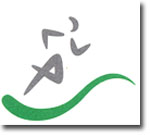

Achilles tendonitis is inflammation and pain in the back of the ankle. The Achilles tendon is the attachment for the calf muscles and is critical for the push-off phase in walking, running or jumping. It can be used from a sudden increase in activity, overuse of the lower leg muscles, or after a direct blow or injury to the lower leg or foot.

Start slow with these exercises, progress until you feel a gentle stretching sensation. Each stretch should be held for 20 to 30 seconds. These exercises should not increase your pain, even the day after exercise.

Figure 2: Gastrocsoleus Stretch I- Stand facing a wall, place calf to be stretched behind you. Turn toes in and heel out of the leg to be stretched. Lean in to wall while keeping your heel on the floor. First keep you knee straight then bend your knee.

Figure 3: Gastrocsoleus Stretch II- Place your toes and the ball of your foot on a book or the edge of a stair. Your heel should be off the ground. Hold on to a chair or stair rail for balance. Allow your body weight to stretch the calf and Achilles. First do with your knee straight, then with a bent knee.

Figure 4: Plantar Flexor Strength I- Loop elastic band or towel around foot as shown. Pull the band toward you. Push your toes away from you slowly. Hold for several seconds, repeat several times.

Figure 5: Plantar Flexor Strength II- Stand on the edge of a step as shown, with your body weight on the front of the foot raise your body with your knee straight. Lower the heel of the injured side below the level of the step. Rise back up to the level of the step, using the uninjured leg if you need help. Work to 3 sets of 15. You can advance this exercise by bending the knee slightly on the injured leg or by wearing or by wearing a backpack with weights inside.